Takashi Murakami Follow With Eyes on the Reality of One Hundred Years from Now signed and dated 'TAKASHI 2013' on the overlap acrylic on canvas 100.5 x 100 cm (39 5/8 x 39 3/8 in.) Painted in 2013.
Provenance Private Collection McCabe Fine Art, Stockholm Acquired from the above by the present owner Catalogue Essay Takashi Murakami’s colourful universe, crowded with whimsical flowers and fictitious creatures, has been developing on canvas over the course of twenty years, nurtured by the Japanese artist’s long-standing fascination with the graphic quality of manga and anime. After learning from Japan’s most prestigious school of painting –Nihonga traditionalism– the artist turned towards a more experimental and contemporary pictorial technique, blending it with animation tweaks in order to create energetically fantasmagoric canvases. The resulting works –all buoyant and dream-like– have come to define the Japanese artist’s visual language, and now taken over popular culture altogether. Murakami’s Eyes On the Reality of One Hundred Years From Now , 2011, consistent with the the artist’s unique style of painting, works like a self-contained micro-universe. The work’s kaleidoscopic structure set against an empty monochromatic background merges notions of vitality and tranquility, neatly aligning with the ‘Superflat’ principles Murakami conceptualised in the 1990s, which investigated the formal stillness typically found in Japanese prints and Modernist works. Indeed, though characters proliferate across its surface to the point of haziness, the painting at hand retains a motionless perspective, as though stretched-out on a layered plane composed of horizontal lines. In evoking Japan’s hyper-consumerist culture, Eyes On the Reality of One Hundred Years From Now furthermore gains conceptual depth, incorporating within its dynamic atmosphere a counterbalancing tone of solemnity. The numerous signs of commercialisation, capitalism and westernization within the painting indeed complexify the work’s upbeat energy, enveloping it with a lightly concealed sense of malaise. Reminiscent of Yoshitomo Nara’s N.Y Self-Portrait , 2002, Eyes On the Reality of One Hundred Years From Now also boasts an air of self-deprecation. Both artists’ portrait renditions illustrate somewhat unaffected characters whose cold and composed facial expressions border on the farcical. While N.Y Self-Portrait allows a close examination of its isolated character, Murakami’s populated canvas provides ground for comparison. Numb amidst a multitude of expressive creatures, the protagonist in Eyes On the Reality of One Hundred Years From Now imbues its loud decor with a sense of existential gravity, as though virtually detaching itself from the general atmosphere of camaraderie. The Japanese artist famously philosophised such representational undertakings. Deeming good and evil ‘two sides of the same coin’ and thus conflating emotions into one indistinctive block, Murakami indeed designated ‘human folly’ as life’s only viable remedy (Takashi Murakami Ego , New York, 2012, p. 30). The sense of disaffection and removal expressed here makes sense of the oscillating tempers existing within the artist’s paintings, and gives a clearer picture of Murakami’s overall artistic project. Individualism versus interdependence is, as such, one of the most prevalent oppositions in the artist’s work. Within Japanese culture, the concept of the individual must be ‘contextualised’ so as to comply with the superior governance of society. On this matter, Dutch writer Van Wolferen states: ‘Japanese are expected to stick to their roles, and to make the roles clear with their dress, speech and behavior […] Murakami pushes forward representations of individuality that overturn conventional ideas about an individual’s relation to society’ (Amada Cruz, Midori Matsui and Dana Friis-Hansen, Takashi Murakami The Meaning of the Nonsense of the Meaning , New York, 1999, pp. 38-39). This meditation was further analysed by critic Fumio Nanjo, who, regarding Murakami’s position, exclaimed the following: ‘The problem is one of position: where does an artist place himself in relation to the complex iss
Takashi Murakami Follow With Eyes on the Reality of One Hundred Years from Now signed and dated 'TAKASHI 2013' on the overlap acrylic on canvas 100.5 x 100 cm (39 5/8 x 39 3/8 in.) Painted in 2013.
Provenance Private Collection McCabe Fine Art, Stockholm Acquired from the above by the present owner Catalogue Essay Takashi Murakami’s colourful universe, crowded with whimsical flowers and fictitious creatures, has been developing on canvas over the course of twenty years, nurtured by the Japanese artist’s long-standing fascination with the graphic quality of manga and anime. After learning from Japan’s most prestigious school of painting –Nihonga traditionalism– the artist turned towards a more experimental and contemporary pictorial technique, blending it with animation tweaks in order to create energetically fantasmagoric canvases. The resulting works –all buoyant and dream-like– have come to define the Japanese artist’s visual language, and now taken over popular culture altogether. Murakami’s Eyes On the Reality of One Hundred Years From Now , 2011, consistent with the the artist’s unique style of painting, works like a self-contained micro-universe. The work’s kaleidoscopic structure set against an empty monochromatic background merges notions of vitality and tranquility, neatly aligning with the ‘Superflat’ principles Murakami conceptualised in the 1990s, which investigated the formal stillness typically found in Japanese prints and Modernist works. Indeed, though characters proliferate across its surface to the point of haziness, the painting at hand retains a motionless perspective, as though stretched-out on a layered plane composed of horizontal lines. In evoking Japan’s hyper-consumerist culture, Eyes On the Reality of One Hundred Years From Now furthermore gains conceptual depth, incorporating within its dynamic atmosphere a counterbalancing tone of solemnity. The numerous signs of commercialisation, capitalism and westernization within the painting indeed complexify the work’s upbeat energy, enveloping it with a lightly concealed sense of malaise. Reminiscent of Yoshitomo Nara’s N.Y Self-Portrait , 2002, Eyes On the Reality of One Hundred Years From Now also boasts an air of self-deprecation. Both artists’ portrait renditions illustrate somewhat unaffected characters whose cold and composed facial expressions border on the farcical. While N.Y Self-Portrait allows a close examination of its isolated character, Murakami’s populated canvas provides ground for comparison. Numb amidst a multitude of expressive creatures, the protagonist in Eyes On the Reality of One Hundred Years From Now imbues its loud decor with a sense of existential gravity, as though virtually detaching itself from the general atmosphere of camaraderie. The Japanese artist famously philosophised such representational undertakings. Deeming good and evil ‘two sides of the same coin’ and thus conflating emotions into one indistinctive block, Murakami indeed designated ‘human folly’ as life’s only viable remedy (Takashi Murakami Ego , New York, 2012, p. 30). The sense of disaffection and removal expressed here makes sense of the oscillating tempers existing within the artist’s paintings, and gives a clearer picture of Murakami’s overall artistic project. Individualism versus interdependence is, as such, one of the most prevalent oppositions in the artist’s work. Within Japanese culture, the concept of the individual must be ‘contextualised’ so as to comply with the superior governance of society. On this matter, Dutch writer Van Wolferen states: ‘Japanese are expected to stick to their roles, and to make the roles clear with their dress, speech and behavior […] Murakami pushes forward representations of individuality that overturn conventional ideas about an individual’s relation to society’ (Amada Cruz, Midori Matsui and Dana Friis-Hansen, Takashi Murakami The Meaning of the Nonsense of the Meaning , New York, 1999, pp. 38-39). This meditation was further analysed by critic Fumio Nanjo, who, regarding Murakami’s position, exclaimed the following: ‘The problem is one of position: where does an artist place himself in relation to the complex iss
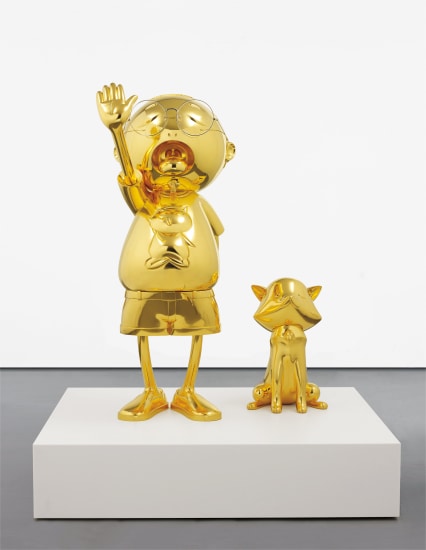




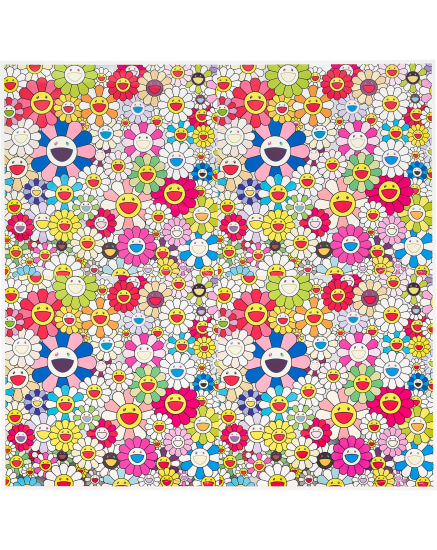

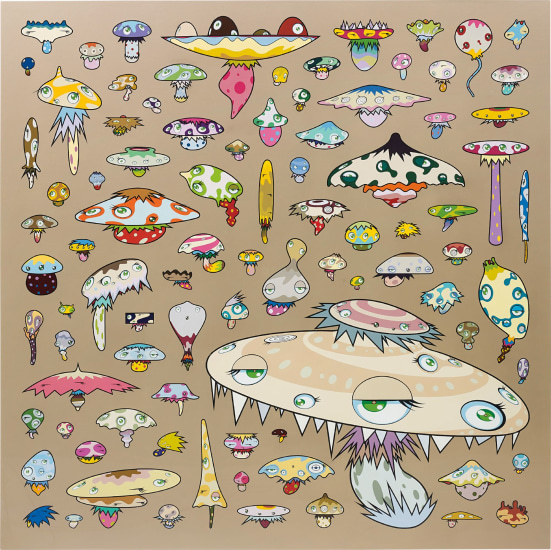

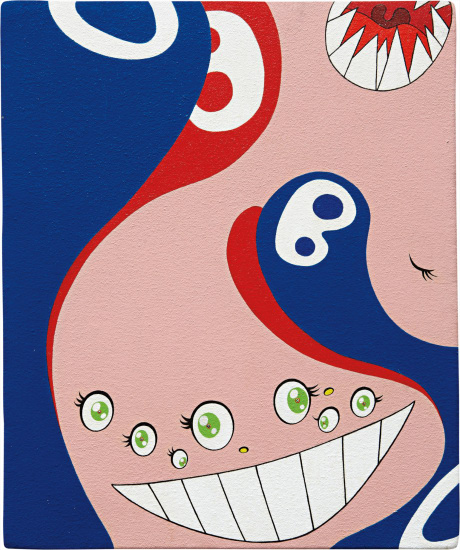
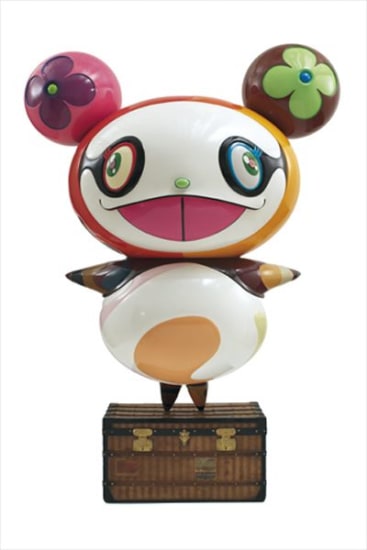
Try LotSearch and its premium features for 7 days - without any costs!
Be notified automatically about new items in upcoming auctions.
Create an alert